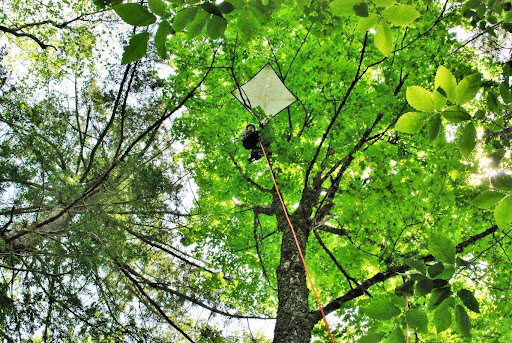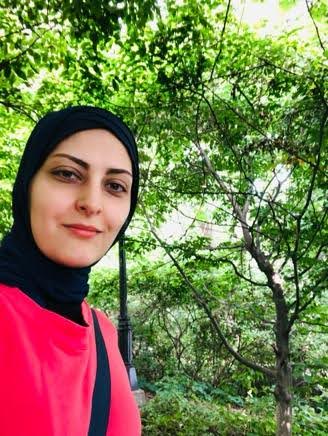By Mahsa Hakimara, PhD student at Concordia University
In the complex environment of temperate forests, light gradients from the forest floor to the canopy create diverse habitats that profoundly influence ecological interactions. Central to this complexity is the relationship between leaf physical traits, sun exposure, and insect herbivory—a dynamic explored by our research across twelve sugar maple (Acer saccharum) sites in southern Quebec.
Our study aimed to investigate how varying light intensities, from saplings in the understory to the branches in shaded and sun canopy of mature trees, shape leaf physical traits and impact insect herbivory damages as well as insect herbivore community. Over the summers of 2020 to 2022, we meticulously monitored insect herbivore patterns by visual assessments of nine different damage types including leaf rollers, leaf cutters, leaf skeletonisers, leaf stippling, spindle gall makers, erineum gall makers, ocellate gall makers, leaf miner- maple leaf cutters, leaf-blotch miners (see figure below), caused by insect herbivores from various feeding guilds and by collecting actual insect herbivores using beat sheeting method from all three strata. We also measured leaf physical characteristics across these vertical strata. All samplings were conducted in one of the largest old growth, sugar maple dominated, temperate forests named Kenauk Nature, located in southwestern Quebec, Canada (45°42’N; 74°53’W).

A key finding was the increase in leaf thickness and decrease in water content and specific leaf area from the understory to the sunlit canopy, particularly evident in 2021. This change rendered leaves less palatable to herbivores in the upper canopy—a phenomenon mirrored by reduced damage from leaf cutters, skeletonizers, stipplers, and leaf miners as we ascended through the forest layers in 2020 and 2021.
These observations underscore our hypothesis that variations in leaf physical traits, driven by sun exposure, play a crucial role in structuring insect herbivore communities within sugar maple forests. The trends persisted into 2022, where the gradient of insect herbivore abundance aligned closely with our previous findings on damage patterns. Our analysis revealed an average annual herbivory rate of 9.1% of leaf surface area, highlighting the cumulative impact of these ecological interactions over time.

Our study contributes valuable insights into forest ecosystem resilience and management strategies aimed at preserving sugar maple habitats. By elucidating the intricate interplay between light availability, leaf characteristics, and insect herbivory, we enhance our understanding of forest ecology and underscore the critical role of leaf traits in shaping community dynamics. As we navigate the challenges of forest conservation in a changing climate, insights from studies like ours are essential for informed decision-making and sustainable stewardship of natural ecosystems.
This work has been presented in many conferences and symposiums, including QCBS 2024. Thanks to the funding provided by the QCBS Excellence Award, the author, Mahsa Hakimara, as the award winner, will have the opportunity to present her findings on an international platform at the Symposium on Insect-Plant Relationships (SIP) 2024 in Germany. This venue is a perfect place for networking, collaboration, and contributing to the success and impact of her graduate research project.


About the Author: Mahsa is a PhD student at Concordia University, where she has been researching in Dr. Emma Despland’s lab since fall 2020. Her project, “Insect Herbivory Patterns on Sugar and Black Maples in Quebec’s Temperate Forests,” reflects her passion for insects, which began during her bachelor’s program, leading her to do a master in insect taxonomy and then pursue a PhD in insect ecology. Mahsa is dedicated to uncovering the intricate interactions between plants and insects within forest ecosystems.

0 Comments